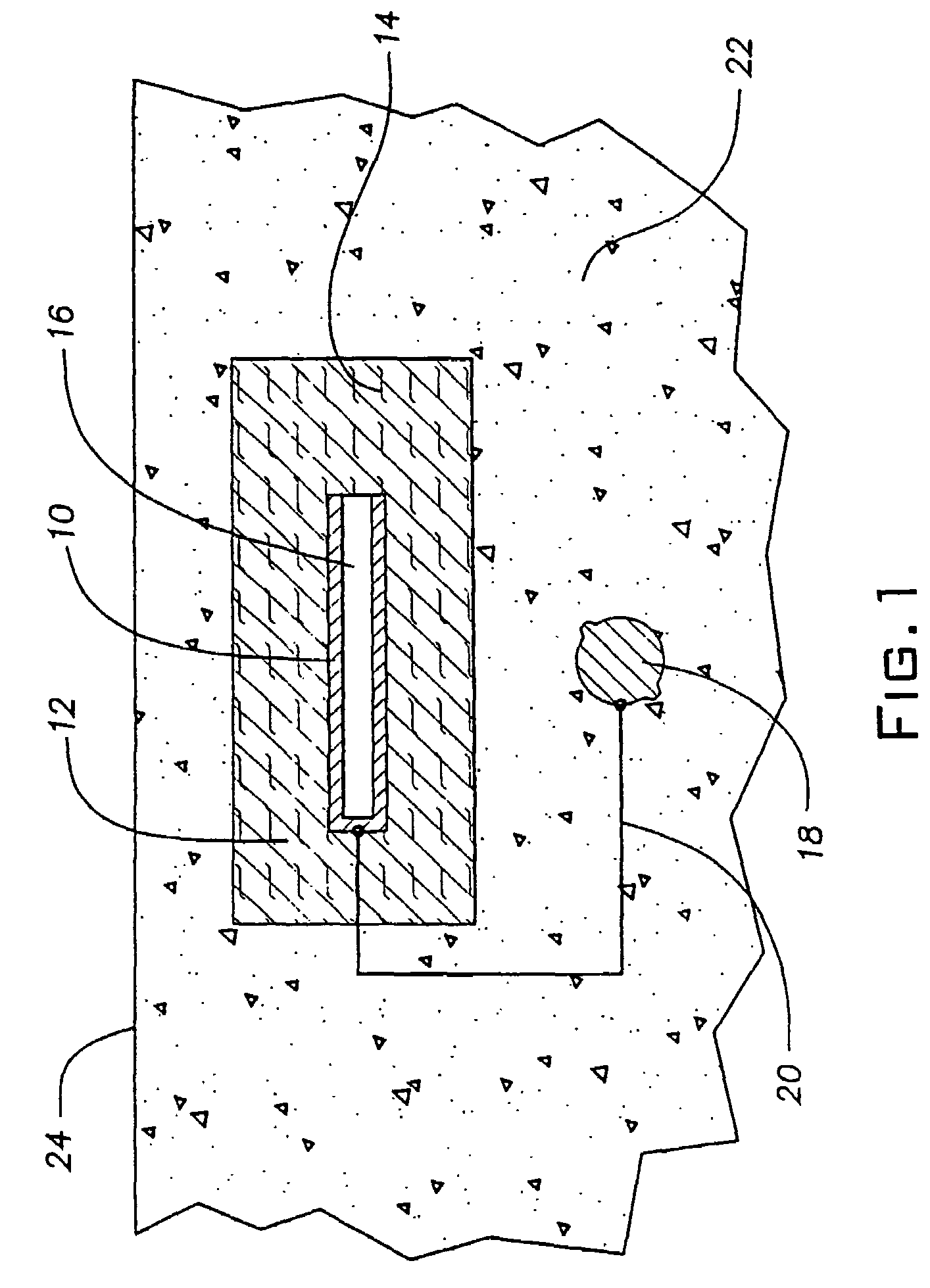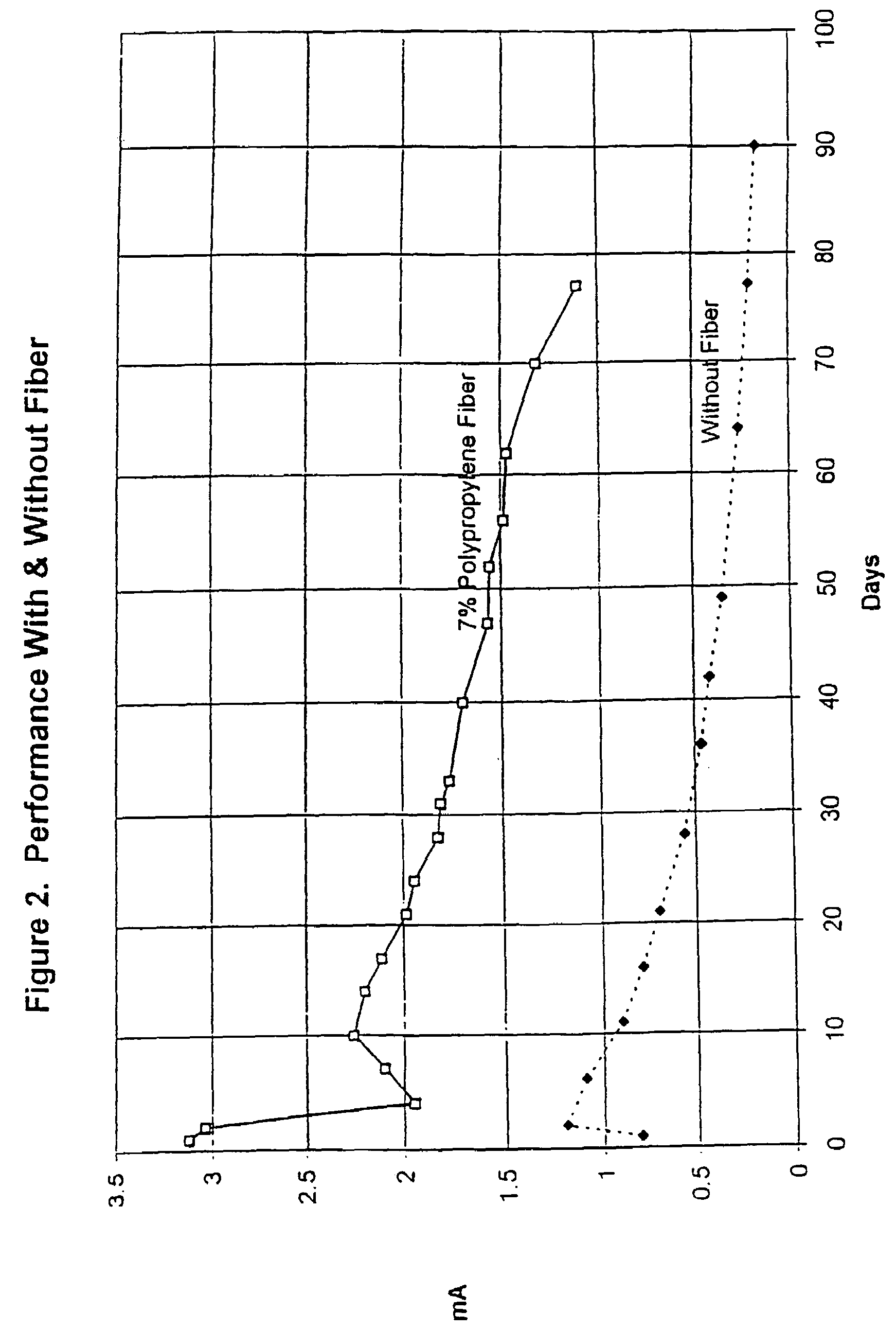Cathodic protection system
a cathodic protection and cathodic technology, applied in the field of galvanic cathodic protection of steel, can solve the problems of substantial increase in the protective current delivered by the anode, and achieve the effect of improving the performance and service life of the embedded anode and enhancing the performance of the sacrificial anod
- Summary
- Abstract
- Description
- Claims
- Application Information
AI Technical Summary
Benefits of technology
Problems solved by technology
Method used
Image
Examples
example 1
[0037]A sacrificial metal anode was constructed using pure zinc sheet expanded to the dimensions 1.25-inches (3.18-centimeters) LWD (long-way dimension) and 0.25-inch (0.64-centimeter) SWD (short way dimension). An anode was cut from this expanded zinc with the dimension 1.25-inch×0.75-inch (3.18 centimeter×1.91 centimeter), or one LWD×three SWD. This provided a zinc metal anode of relatively high surface area. An insulated #16 AWG copper wire was soldered to the zinc anode to provide an electrical connection, and the connection was coated with non-conductive epoxy. A 10-ohm resistor was soldered into the wire from the zinc anode to permit monitoring of the flow of current with time.
[0038]The zinc anode was cast in the center of a round “puck” of mortar designed to enhance the performance of the zinc anode. The mortar mix consisted of Eucopatch, a proprietary one-part, fast-setting, patch and repair material manufactured by The Euclid Chemical Company, and a mixture of 40% by volume...
example 2
[0043]A sacrificial metal anode was constructed using pure zinc sheet expanded to the dimensions 1.00-inches (2.54-centimeters) LWD (long-way dimension) and 0.312-inch (0.79-centimeter) SWD (short way dimension). An anode was cut from this expanded zinc with the dimension 1.00-inch×1.25-inch (2.54 centimeter×3.17 centimeter), or one LWD×four SWD. This provided a zinc metal anode of relatively high surface area approximately equal to the anode used in Example 1. An insulated #16 AWG copper wire was soldered to the zinc anode to provide an electrical connection, and the connection was coated with non-conductive epoxy. A 10-ohm resistor was soldered into the wire from the zinc anode to permit monitoring of the flow of current with time.
[0044]The zinc anode was cast in the center of a round “puck” of mortar designed to enhance the performance of the zinc anode. The mortar mix consisted of a proprietary mixture formulated by The Euclid Chemical Company containing two grades of fine aggre...
PUM
| Property | Measurement | Unit |
|---|---|---|
| length | aaaaa | aaaaa |
| thick | aaaaa | aaaaa |
| thick | aaaaa | aaaaa |
Abstract
Description
Claims
Application Information
 Login to View More
Login to View More - R&D
- Intellectual Property
- Life Sciences
- Materials
- Tech Scout
- Unparalleled Data Quality
- Higher Quality Content
- 60% Fewer Hallucinations
Browse by: Latest US Patents, China's latest patents, Technical Efficacy Thesaurus, Application Domain, Technology Topic, Popular Technical Reports.
© 2025 PatSnap. All rights reserved.Legal|Privacy policy|Modern Slavery Act Transparency Statement|Sitemap|About US| Contact US: help@patsnap.com


